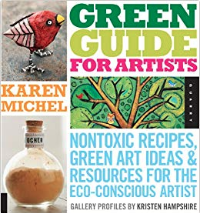
Remember McLuhan’s famous quote about aligning the medium with the message? He wrote this in the 1960s, well before environmental art-making became so popular, but it’s a good reminder for those of us practicing eco-art ed with learners of all ages. It’s not sufficient to be making art with a sustainability message if the media you use doesn’t align with it. Working with toxic materials like spray paint or oil-based paints subverts the very message we aim to communicate, and demonstrates a “do what I say, not what I do” attitude. Our students are attuned to this type of hypocrisy, and know when we don’t ‘walk the talk’. Art educators need to lead by example, finding ways to share our ideas in low impact, sustainable approaches to art-making. Some make work with their students that is biodegradable (think Andy Goldsworthy as an exemplar); others reuse found materials (Louise Nevelson was an early adopter of this; Tony Cragg also uses it effectively.) I hear of lots of art teachers experimenting with low impact art-making techniques, like gelatin printing and cyanotypes. Others are minimizing their waste and reducing their energy consumption and capturing the waste water from acrylic painting. If you’re looking for ideas on how to proceed, look to the Karen Michel’s book “The Green Guide for Artists” as a great starting point. Consider how can you take the next step in aligning your sustainability message with the media you use in your art classroom.


